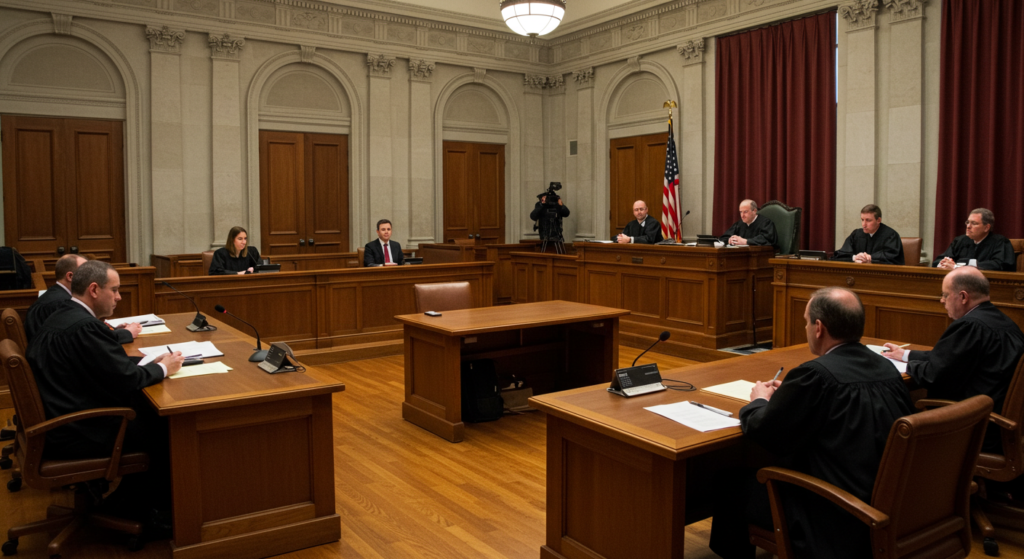Introduction
The Ashcroft Capital lawsuit has captured the attention of investors, industry insiders, and the broader real estate community. Ashcroft Capital, a well-known private equity firm specializing in multifamily real estate, has built its reputation on acquiring, managing, and repositioning apartment communities across the United States. With billions of dollars in assets under management, the firm has attracted thousands of individual investors seeking passive income and long-term growth. However, recent legal challenges have sparked serious conversations about accountability, transparency, and risk management in private equity real estate.
The lawsuit against Ashcroft Capital underscores a critical reality: even established investment firms are not immune to litigation. Whether the claims involve alleged mismanagement, disputes with partners, or investor dissatisfaction, the case has become a talking point for those evaluating the stability of alternative investment platforms. Lawsuits like these can have far-reaching consequences, not only for the firm’s reputation but also for the confidence of current and potential investors. Understanding the nuances of the Ashcroft Capital lawsuit is essential for anyone considering exposure to real estate syndications or private equity funds.
Background on Ashcroft Capital
Ashcroft Capital was founded with the mission of acquiring underperforming multifamily properties, improving them through renovations and operational efficiencies, and delivering strong returns to investors. The firm has made a name for itself by focusing on Class B and Class C apartment communities in high-growth markets such as Texas, Florida, and Georgia. By targeting properties that cater to working-class families and young professionals, Ashcroft Capital has positioned itself in a sector with consistent demand and resilience during economic shifts.
The company has marketed its investment opportunities heavily to individual accredited investors, offering them access to institutional-quality deals typically reserved for larger funds. Its business model has attracted significant attention, as multifamily real estate has historically been a stable asset class compared to more volatile markets like stocks or cryptocurrencies. However, with growth and visibility also comes increased scrutiny. The Ashcroft Capital lawsuit has raised questions about whether the firm has adequately balanced aggressive expansion with the necessary safeguards to protect investor interests.
The Lawsuit Explained
At its core, the Ashcroft Capital lawsuit involves allegations that touch on financial oversight and investor protections. While lawsuits in the private equity space can arise from a variety of factors—ranging from contractual disputes to claims of misrepresentation—what makes this case particularly notable is its focus on how investor funds were managed. Investors often expect high transparency, and any perceived gap can quickly escalate into legal action.
The lawsuit also reflects broader challenges facing the real estate syndication industry. As more retail investors enter the market through crowdfunding and pooled investments, firms like Ashcroft Capital are under greater pressure to maintain rigorous compliance. Whether or not the claims are ultimately upheld, the existence of the lawsuit itself highlights the fine line between investor expectations and operational realities in large-scale property management.
Implications for Investors
For current investors, the Ashcroft Capital lawsuit introduces an element of uncertainty. Litigation can delay distributions, increase legal costs, and cast doubt on the stability of ongoing projects. While the firm has emphasized its commitment to protecting investor interests, some stakeholders worry about potential ripple effects on their returns. This is particularly significant for retirees or passive investors who rely on consistent cash flow from real estate syndications.
Potential investors, on the other hand, may use the lawsuit as a cautionary tale. Due diligence becomes even more critical when selecting private equity partners. Rather than focusing solely on projected returns, investors are reminded to examine a firm’s governance structure, reporting practices, and history of litigation. In this context, the Ashcroft Capital lawsuit has become both a risk and a lesson in the evolving world of passive real estate investing.
Impact on the Multifamily Market
The Ashcroft Capital lawsuit also has implications beyond the firm itself. The multifamily market, particularly Class B and C properties, has seen strong demand in recent years as affordability challenges push renters away from luxury units. A high-profile lawsuit can cause skepticism about the stability of this asset class, even though the fundamentals remain strong.
Industry experts caution against overgeneralizing from one case. Multifamily investments continue to perform well in many regions, and firms with strong compliance and operational systems are thriving. However, the publicity surrounding the Ashcroft Capital lawsuit highlights the need for greater transparency across the industry. As more investors enter the space, regulatory bodies may increase oversight, reshaping the landscape of private real estate capital.
Legal Precedents and Comparisons
The Ashcroft Capital lawsuit is not the first of its kind in the private equity real estate sector. Similar cases have emerged involving disputes over misrepresentation of returns, property valuations, or management fees. These lawsuits often result in settlements, restructured agreements, or changes in business practices designed to protect investors. The outcomes set precedents that influence how firms across the industry operate.
By comparing this case to past examples, investors and analysts gain insight into potential scenarios. While some lawsuits end with minimal disruption, others have led to major shifts in company strategy or even dissolution. The key takeaway is that litigation is a recurring risk in complex financial partnerships, and the Ashcroft Capital lawsuit serves as a reminder of the importance of due diligence and legal safeguards.
Investor Lessons and Takeaways
Perhaps the most important outcome of the Ashcroft Capital lawsuit is the set of lessons it provides for investors. First, legal disputes underscore the importance of reading offering documents carefully, asking critical questions, and verifying the track record of fund managers. Many investors are drawn to multifamily syndications because of their passive nature, but passive should never mean uninformed.
Second, investors must prepare for the possibility of delays, unexpected costs, or legal entanglements when participating in private equity deals. While lawsuits are not inevitable, they are a risk factor that should be accounted for in any diversified portfolio. By treating the Ashcroft Capital lawsuit as a case study, investors can become more discerning in their approach to real estate syndications, ultimately protecting their capital and enhancing long-term returns.
Conclusion
The Ashcroft Capital lawsuit serves as a pivotal moment in the ongoing evolution of private equity real estate. It highlights both the opportunities and the risks associated with multifamily investments, particularly for individual investors seeking passive income. While the outcome of the lawsuit remains uncertain, its existence underscores the importance of transparency, governance, and investor education in this rapidly growing sector.
For current investors, staying informed and engaged is critical to navigating periods of uncertainty. For prospective investors, the lawsuit is a valuable reminder that due diligence should extend beyond return projections to include a thorough review of a firm’s history, compliance practices, and legal standing. As the real estate market continues to evolve, the Ashcroft Capital lawsuit will likely remain a touchstone for conversations about accountability and trust in private equity. By learning from it, investors can make more informed decisions and approach multifamily real estate with greater confidence.







